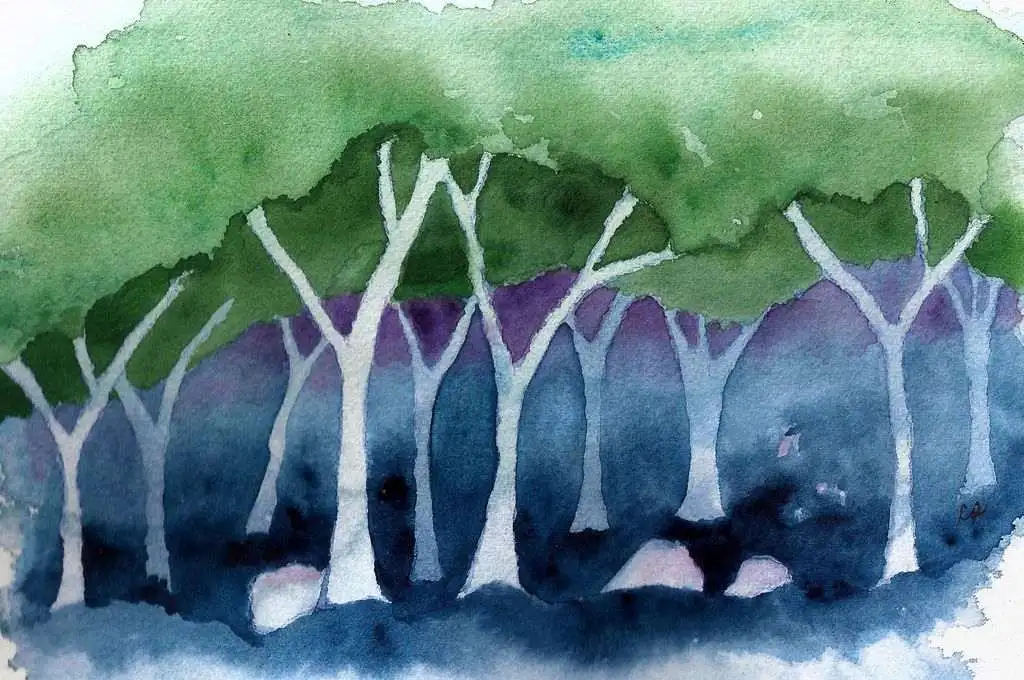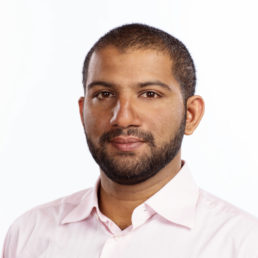The cool November air in Pune carried the aroma of chai, mingling with the low hum of conversation and occasional laughter in the foyer of the Global Opportunity Youth Network (GOYN) Global Convening1. This gathering of youth leaders, philanthropists, and practitioners had been buzzing with energy all day, but now the crowd was quieter and more reflective. American law professor and civil rights scholar John Powell had just delivered a keynote that left everyone thinking.
“Belonging isn’t about inclusion,” he had said. “It’s about co-creation—about creating the systems where everyone can thrive together.”
I lingered on the edges, mulling over his words. Around me, opportunity youth leaders2 spoke animatedly, sharing their experiences of navigating systemic barriers and reimagining futures. Alejandra, a young leader from Colombia, recounted how her community had rallied to co-create a youth innovation fund. “The fund goes beyond money,” she explained. “It’s a way for us to invest in one another’s ideas, to show that our creativity and solutions matter.”
Change emerges when communities lead
Alejandra’s words crystallised a realisation I’d been circling for years: Change is not something we deliver to communities—it’s something that emerges when communities lead. Her story was echoed by Nandita, an artist-activist from India, who shared how her initiative to revive the Warli painting tradition had grown into a movement connecting tribal youth with global audiences. “It’s not about preserving art in a museum,” she said. “It’s about living it, evolving it, and letting it speak to today’s struggles.”
Both stories reflected a shift from prescriptive solutions to systemic transformation rooted in identity and agency. These youth-led efforts focused not on extracting abstract lessons or scaling a fixed model but on weaving connections, fostering belonging, and enabling environments where communities could thrive on their own terms.
This tension—between abstraction and connection—was the thread John had pulled at, challenging my assumptions about how change happens.
The programme trap
In philanthropy, it is easy to think in terms of programmes and singular solutions. The logic is clean, almost comforting: Define a problem, design a solution, and measure its impact. For years, we donors have funded initiatives that followed this model across education, health, sanitation and other areas. But time and again, we encountered the same limitation—no single intervention could meaningfully shift outcomes in a complex, interconnected system.
For social change to occur, it is relationships that must serve as the scaffolding for growth.
Take the example of education. We have poured resources into teacher training, remedial education, and curriculum enhancements, believing these would improve learning outcomes. But these efforts didn’t account for the realities outside the classroom. Hungry children couldn’t concentrate; anxious children couldn’t thrive. Teachers were overwhelmed by challenges that no amount of professional development alone could solve. The strands of nutrition, mental health, infrastructure, and community support were deeply interwoven. Addressing one issue in isolation unravelled others.
This programmatic approach had a second, subtler flaw: abstraction. When we tried to replicate success by distilling it into frameworks, we froze something dynamic into a static snapshot—a moment in time divorced from the ongoing evolution of the work. The problem isn’t just that abstraction simplifies; it also misrepresents.
When intermediaries step in to codify and distribute learnings, they often capture a single version of the work at a particular moment in its evolution. But the work itself continues to change, informed by new challenges, insights, and relationships. These static frameworks, though widely distributed, fail to reflect the dynamic nature of the work and risk reinforcing outdated approaches.
What we need isn’t a better intermediary or a sharper snapshot. We need spaces and venues where people with common values can find each other, forge deep personal connections, exchange ideas, co-learn in real time, and co-create enduring solutions. For social change to occur, it is relationships that must serve as the scaffolding for growth. This relational foundation is not a secondary feature; it is the essence of meaningful, adaptive change.

The shift to connection
John’s keynote articulated something I had sensed but was struggling to name: the distinction between ‘bridging’ and ‘breaking’ solutions. ‘Breaking’ solutions separate ideas from their origins, freezing them in time. ‘Bridging’, on the other hand, creates spaces where stories, ideas, and relationships flow freely, evolving as they connect with new contexts.
This shift from abstraction to connection isn’t theoretical. It’s already happening. The 24×7 ON Court initiative in Kollam, spearheaded by the Kerala High Court and supported by the nonprofit mission PUCAR, is a promising example of how trust and alignment can fuel collaboration.
A collective of lawyers, technologists, and policymakers, PUCAR is working to unstick a justice system bogged down by outdated processes and inefficiencies. Their goal is to make dispute resolution faster, fairer, and more accessible for everyone. The 24×7 ON Court in Kollam, India’s first fully digital court, is one example of this vision in action. The court handles cheque dishonour cases entirely online, enabling litigants to file cases, attend hearings, and receive judgements without stepping into a courtroom.
Though still in its early days, the initiative has already seen strong participation from the local bar association. Far from being a centrally orchestrated roll-out, the project has been a collaborative, co-created effort. Lawyers at the bar association have taken ownership and are not only implementing the system but also actively contributing to its evolution. Their inputs—ranging from practical tools such as payment calculators and drafting templates to systemic process improvements—have enhanced the platform’s relevance and responsiveness.
The high court’s leadership in setting the stage, combined with the bar association’s stewardship, has allowed this initiative to develop as a relational ecosystem—one where tools and processes are refined through connection, dialogue, and shared purpose. This isn’t a top-down roll-out masked as collaboration; it’s a genuinely co-created ecosystem in which the focus is on trust and working towards a shared purpose. Instead of imposing solutions, the different actors are focused on constant dialogue and iteration. The lawyers are more than just users of the system—they are stewards who are refining the platform so that it fits the real needs of their community.
While much remains to be seen, early signs suggest that when trust and ownership intersect, innovation can take root in ways that are both meaningful and enduring.
Belonging as a systemic lens
At the GOYN convening, I witnessed the principle of connection in action. Rather than being passive recipients of interventions, opportunity youth leaders were co-creators of solutions deeply rooted in their own communities. Whether tackling unemployment, education, or mental health, these young leaders were not building programmes but ecosystems of support.
For example, in Mexico City, young people worked with more than 90 institutions to push for inclusive employment policies. The intention was to go beyond job placements and build a network of public, private, and civil society partners committed to creating real pathways to meaningful livelihoods.
This, I realised, was the essence of John’s idea of belonging: co-creating systems where everyone feels seen, valued, and empowered to contribute. Belonging isn’t something you can deliver through a single intervention. It is the foundation of systemic change, the thread that ties individual outcomes to collective transformation.
John’s call to create systems where belonging is a design principle invites us to broaden our understanding of orchestration. Orchestration refers to the coordination and management of multiple components, programmes, and stakeholders in the service of achieving a common impact goal. Effective systems orchestration, while critical, can risk becoming overly reliant on abstraction if it loses sight of the people and relationships at its core.
To catalyse transformation, we must pair orchestration with a deep commitment to the messiness of human connection, the unpredictability of relationships, and the humility of shared learning. This balance allows us to build systems that are not brittle frameworks but resilient networks—forests capable of weathering any storm. Belonging, therefore, isn’t just a moral imperative; it’s a practical one.
Philanthropy’s role in connection
For philanthropy, this committing to connection means moving beyond prescriptive approaches. It requires trust, humility, and a willingness to relinquish control; letting communities lead, and paving the way for solutions to emerge organically. The challenge lies in navigating the shift from linear, programmatic approaches to non-linear, systemic change.
John’s concept of targeted universalism offers a way forward. It starts with a universal goal—such as equitable education or dignified livelihoods—but acknowledges that different communities require different pathways to reach it.
For philanthropy to embrace this shift, it needs to rethink its role entirely. Instead of designing and deploying solutions, it must become a facilitator of connection. Here’s what this involves:
- Investing in ecosystems: Supporting the holistic conditions that allow communities to thrive, rather than having a narrow focus on isolated outcomes. For instance, in the city of Mombasa in Kenya, youth leaders avoided quick fixes for unemployment. Instead, they co-created initiatives such as the County Revolving Fund and ICT hubs, building an ecosystem that combined skills training, government partnerships, and long-term economic support.
- Creating collision spaces: Building platforms for practitioners, community members, and youth leaders to share, adapt, and evolve insights. At Rohini Nilekani Philanthropies (RNP), we’ve seen this in action through convenings designed as containers for connection. At a recent retreat, we avoided packed schedules, allowing unhurried, iterative dialogue where participants—not intermediaries—shaped the conversation. Insights from day one dynamically informed day two discussions, fostering a network of ideas and relationships that remained alive and adaptive long after the event.
- Trusting the process: Accepting that systemic change is non-linear and unpredictable, and that the best solutions often emerge from the ground up.
A vision for belonging
John’s call to action at the GOYN convening was to create systems where everyone belongs. Philanthropy has the power to catalyse this kind of belonging, but it requires a leap of faith. It means stepping back from the comfort of frameworks and into the uncertainty of human relationships. It means seeing communities not as beneficiaries but as collaborators. And it means understanding that the best solutions are co-created, not prescribed.
As the convening wound down, I observed Alejandra animatedly exchanging ideas with Nandita, their conversation flowing effortlessly between laughter and deep intent. Around them, other youth leaders, funders, and practitioners lingered, chai in hand, their discussions unhurried and vibrant. The scene felt alive—a living ecosystem where connections, rather than outcomes, were the driving force.
This, I realised, is what connection looks like. Not abstraction, not a framework, but a dynamic, evolving web of relationships. And in that moment, I understood that philanthropy’s most important role is not to abstract solutions, but to nurture the connections that make them possible.
—
Footnotes:
- The GOYN Global Convening is an annual event that brings together global and community partners, as well as opportunity youth leaders, to collaborate on strategies for youth empowerment and economic inclusion. The 5th Annual GOYN Global Convening took place in Pune, Maharashtra, in November 2024. Hosted by the Lighthouse Communities Foundation in collaboration with the Pune Municipal Corporation and Pimpri-Chinchwad Municipal Corporation, the theme of the 2024 convening was “Transforming Youth Livelihoods: Pathways to Full Potential”. The event focused on co-creating pathways toward personal success, well-being, and financial sustainability for young people worldwide.
- In India, the term NEET (not in education, employment, or training) is used to describe opportunity youth.
—





